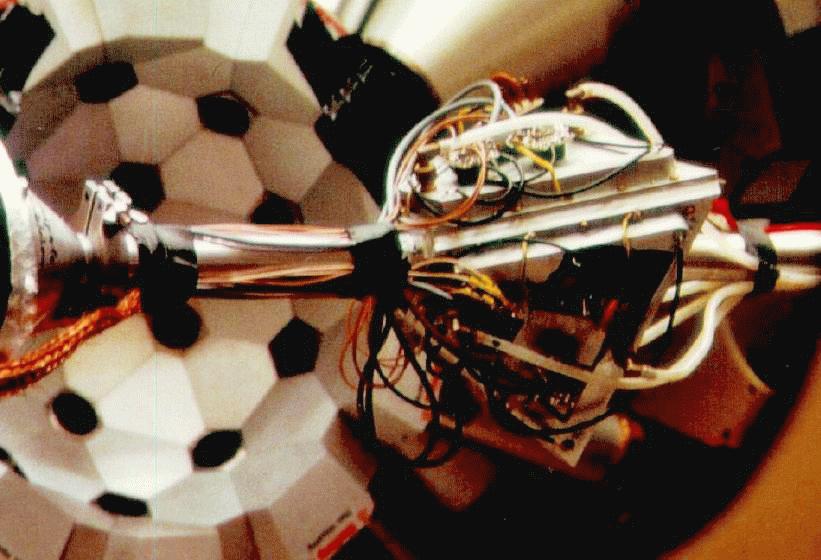The PPAC array PYRAMIDE

The PYRAMIDE is an array composed of 3 parallel plate
avalanche counters (PPACs) which are
position sensitive in two dimensions.
It was developed by a collaboration of the
University of Frankfurt am Main and
GSI, Darmstadt
[1].
The PYRAMIDE
detects scattered projectile-like ions in Coulomb excitation and
multi-nucleon transfer studies in coincidence with the gamma-rays.
It was designed to cover a wide range of scattering angles
(74o to 162o
in the laboratory system)
and a large solid
angle of 1.8pi. Furthermore, the signal from the PPAC
serves as time reference in the trigger,
because its time resolution is much better than that of Ge detectors.
The measurement of the scattering angle and, hence, the impact parameter
enables the investigation of the dependence of cross sections on the
distance between the two colliding nuclei
as well as a Doppler correction of the emitted gamma-rays.
The position sensitivity is achieved by analysing the charge division
on a resistive layer which is evaporated on a printed circuit board.
The charges are collected on every edge of the trapezoidal-shaped board.
A more recent development is a multilayer board with
delay lines in two dimensions.
The PYRAMIDE was used together with GASP
since the beginning of the GASP activity (1992) [2]
as well as in pre-EUROBALL experiments at GSI (1996)
[3].
- [1]
- K. Vetter, Th. W. Elze, M. Kaspar,
T. Kröll, J. Gerl,
Nucl. Instr. and Meth. A 344, 607-610 (1994)
- [2]
- J. Gerl, D. Bazzacco, Th. W. Elze, T. Happ,
T. Härtlein, W. Korten, T. Kröll, D. Napoli, C. Rossi Alvarez,
R. Schubert, K. Vetter, H. J. Wollersheim,
Prog. Part. Nucl. Phys, Vol. 38, 79-85 (1997)
- [3]
- I. Peter, W. von Oertzen, H. G. Bohlen,
A. Gadea, B. Gebauer, J. Gerl, M. Kaspar, I. Kozhoukharov, T. Kröll,
M. Rejmund, C. Schlegel, S. Thummerer, H. J. Wollersheim,
Eur. Phys. J. A4, 313-316 (1999)
